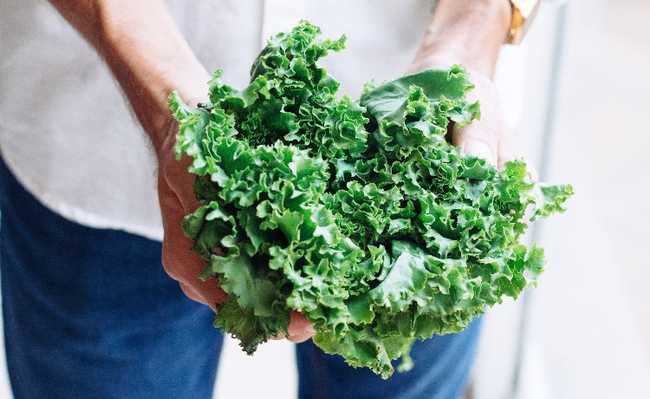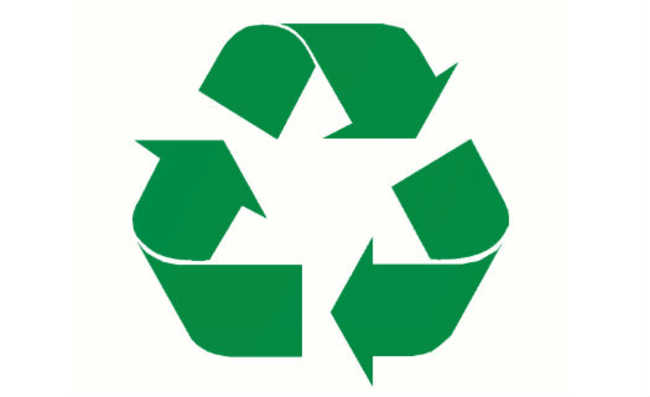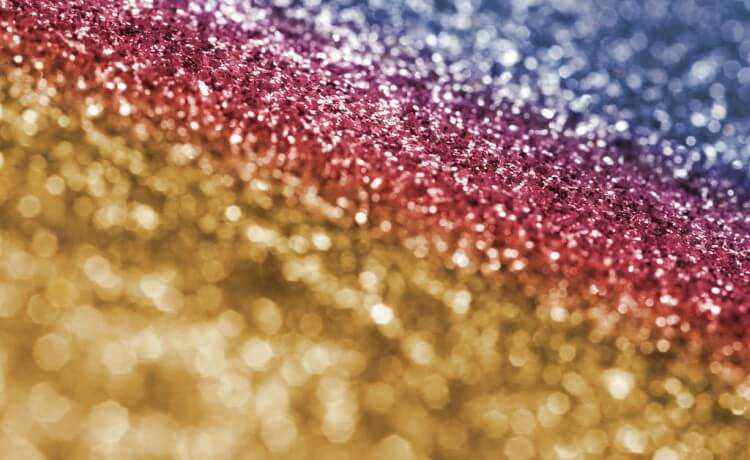Disposable diapers: know hazards, impacts and alternatives
Manufacture of disposable diapers consumes a lot of resources and, once used, they take years to decompose

Image: Noob Mother
The need for a material that fulfills the function of retaining the urine and feces of babies existed since Antiquity - plant leaves and animal skins were used in different cultures. In some regions with warmer climate, over the later centuries, it was common to let the children walk around naked while the mothers watched closely, in an attempt to anticipate bowel movements, to avoid the dirt. In the 19th century, after the Industrial Revolution, the cloth diaper was born and became popular in the West, made with cotton material.
Disposable diapers only emerged in the mid-1940s, when, at the end of World War II, cotton had become a scarce product, leading a Swedish paper company to create diapers using sheets of paper. tissue placed inside a plastic film. In the same decade, a resident of the United States used bathroom curtain scraps to create a waterproof protective cover that, placed inside a conventional cloth diaper, prevented the pee from leaking from her child's diaper.
In the 50s, large companies started to enter the disposable diaper business and were improving them, but the diapers produced were very expensive and their distribution was limited to a few countries. In the following decades, disposable diapers were improved and became a little more affordable. The paper tissue was replaced by cellulose fiber and the discovery of superabsorbent polymer (PSA) in the 1980s, made diapers thinner and reduced problems related to leaks and rashes.
- First national biodegradable diaper, Herbia Baby has a smaller environmental footprint and is healthier for the baby
- Biodegradable diaper made of cardboard can reduce environmental impacts
In recent decades, the practicality of the disposable diaper (infant and geriatric) has made it essential in the lives of most families. The product, however, started to generate discussions about its dangers and environmental impacts from manufacturing to disposal, and people started talking about the rebirth of cloth diapers and the newest options, which are hybrid diapers and biodegradable disposable diapers.
Baby health hazards
A study published by the National Agency for Sanitary Safety in Food, Environment and Work (Anses) of France analyzed disposable diapers and found 60 toxic substances, including glyphosate, the most used pesticide in the world.
Among the substances found, there are also endocrine disruptors and carcinogens. In addition to glyphosate, which is used during the planting of diaper raw material, there are other substances intentionally added to give it aroma.
Other hazardous substances from the raw material of diapers found in the samples were PCB-DL (a chlorine derivative), furans (highly flammable and toxic), dioxins (potentially carcinogenic) and polycyclic aromatic hydrocarbons (PAH). These harmful components are the result of combustion at high temperatures, usually arising from the burning of diesel during the planting of the raw material for diapers.
- Glyphosate: widely used herbicide can cause fatal diseases
- PAHs: what are polycyclic polycyclic aromatic hydrocarbons
- Ascarel: do you know what PCBs are?
- Dioxin: know its dangers and be careful
In total, 23 brands on the French market were analyzed and the report shows that, in the presence of urine, the chemicals come into direct and prolonged contact with the babies' skin. Given this situation, Anses strongly recommended that manufacturers reduce or eliminate as much as possible the presence of these substances in disposable diapers. The problem is that there are still no significant studies on the dangers of non-disposable diapers. It is not known if they, being made of cotton, present the same risks as disposable ones.
Impacts on the environment
On average, six thousand diapers are used and discarded in the first three years of a baby's life and each one takes about 450 years to decompose in the environment. In Brazil, the consumption of disposable diapers has been increasing in recent years. According to data from the Brazilian Association of the Personal Hygiene, Perfumery and Cosmetics Industry (Abihpec), 5.6 billion diapers were sold to consumers in the Brazilian market in 2009 and 7.9 billion in 2014, which led the country to the third largest consumer of disposable diapers in the world.
Considering the life cycle of the disposable diaper, in addition to its persistence in my post-use environment, the product has different impacts related to its production. This cycle can be divided into the following phases: raw material extraction, material manufacturing, product manufacturing and final disposal.
What is it composed of and how does it work?
The composition of a disposable diaper can be approximately 43% cellulose pulp (cellulose fluff), 27% superabsorbent polymer (PSA), 10% polypropylene (PP), 13% polyethylene (PE), and 7% tapes, elastics and adhesives. Having for this, in its manufacture, the use of resources such as trees, oil, water and chemical products.
In diaper configuration, polypropylene makes up the layer that comes in direct contact with the baby, and its function is to facilitate the flow of liquid into the absorbent layer. Superabsorbent polymers have a great affinity for water; these, together with the cellulose pulp, form the superabsorbent gel blanket, which is placed in the diaper filling in order to absorb liquids. The product's coating is composed of polyethylene, a hydrophobic polymer (has aversion to water) that is placed on the outside and sides, in order to prevent liquid leakage out of the diaper.
Extraction of natural resources
The production process of disposable diapers requires the extraction of trees to obtain cellulose and oil extraction for the production of synthetic polymers, in addition to the consumption of water and energy. See below how these processes are:
tree extraction
Cellulose is a substance that exists inside plant cells and, due to its characteristics, can be used for various industrial purposes. Brazil is one of the major producers of cellulose derivatives, and in the country, the planting of eucalyptus is one of the main sources of food for the cellulose industry to obtain short fiber, used in the manufacture of paper. The management of these forests helps to supply the market, which was previously served by native species.
For the production of disposable diapers, the raw material is long fiber cellulose, originated from gymnosperm plants (mainly pine) and characterized by having a high absorption power. According to the Brazilian Association of Planted Forest Producers (Abraf), pine plantations cover 1.8 million hectares of the national territory (they are concentrated in the southern region), and are intended for various industrial uses. According to the BNDES, the national production of this fiber is insufficient to meet the internal demand, and the country needs to resort to imports, which are around 400 thousand tons per year.
Eucalyptus and pine plantations, as they are fast-growing species, absorb high rates of CO2 from the atmosphere during their growth, but, on the other hand, consume a lot of water. These plantations are generally presented in monoculture systems (only one species) and their environmental impacts, according to a study by the BNDES, fundamentally depend on the conditions prior to planting. When implemented in places that previously had a native biome (see case), there is a loss of local biodiversity, however, when reforestation is carried out in areas of degraded pastures or places previously used for intensive agriculture, there can be environmental gains. In order to minimize the negative effects of these plantations, it is important that pulp and paper companies are certified by environmental quality assurance systems, such as the IS0 14001 system and by FSC and Cerflor forest certifications.
Oil extraction
The superabsorbent polymer (PSA), polypropylene (PP), polyethylene (PE) and parts of the materials used in the production of tapes, elastics and adhesives have in common the fact that they are synthetic polymers produced from naphtha. Naphtha is a fraction of petroleum, a non-renewable resource, obtained through its refinement, and destined to a large extent for the production of synthetic polymers (plastics).
The processes of extracting, separating, refining and transporting naphtha already have a high environmental footprint, because these processes burn fossil fuels, emitting greenhouse gases.
Materials manufacturing
Fluff Cellulose
The wood goes through some processes to obtain the cellulose roll (a material that will be effectively used in the disposable diaper manufacturing factories). The process involves: washing, baking (kraft), screening, delignification, bleaching, drying, packaging and transport to the diaper factory.
For the bleaching process, chemical products are used and by-products are generated that can be toxic or not, depending on which products were used in the process. When using chlorine, for example, it is possible that dioxins are released.
Plastics (synthetic polymers)
Liquid naphtha undergoes thermal cracking to produce basic petrochemicals (ethylene, propylene, etc.), which are polymerized into polymers (polyethylenes, polypropylenes, etc.).
In the case of superabsorbent polymers, in their manufacture, basic petrochemicals (propylene or propene) are oxidized to acrylic acid and purified to glacial acrylic acid. In this last product, caustic soda is added to produce sodium polyacrylate (flocgel or superabsorbent gel), which is a substance capable of absorbing water by osmosis.
Both manufacturing processes (pulp and plastic) include addition of chemical products, generation of by-products and consumption of water and energy.
Product manufacturing
The product and the packaging are, in most diaper manufacturing companies, manufactured using machinery, thus, energy is wasted in the entire manufacturing and packaging process. As they are plastic packaging, synthetic polymers are also used in this process.
Synthetic fragrances can also be added, which, depending on the material used, can cause contact dermatitis (allergy) in the baby.
Final disposition
When disposed of in the environment, the cellulose part of the diaper can decompose in a few months, but superabsorbent polymers and plastic components cannot, which results in the persistence of these residues in the environment for a long period of time, allowing, when disposed in dumps (open air and without previous soil preparation), the attraction of disease vector insects and the contamination of groundwater by microorganisms present in the feces that were discarded with the diapers (it is recommended that the feces be thrown away in the toilet before discarding the diaper, but avoid throwing the entire diaper into the toilet, so as not to pollute surface water).
An alternative to reduce the volume of solid waste in landfills (and recommended by law 12,305/2010) is to prioritize the non-generation, reduction, reuse, recycling, treatment of solid waste and subsequent disposal of waste in landfills. Known technologies are:
Recycling: it is possible to recycle disposable diapers by grinding the waste, separating them into plastic and fibers and reusing these materials for new confections. The measure already exists in some countries, but it is not yet a reality in Brazil.
Incineration with energy recovery: incineration and subsequent energy recovery is a possible option for disposable diapers, due to its moisture content and thermal value of some materials from which it is composed, but its technical, economic and environmental feasibility must be proven , in addition to requiring a monitoring of the emission of toxic gases (such as dioxin), approved by the environmental agency. Some countries already incinerate part of the diaper materials.
Composting at a commercial level (composting plant): is the process of biological degradation of organic matter under aerobic conditions (with the presence of oxygen), generating as a final product a compost that can be used as fertilizer. But common plastics - petroleum-based - are not biodegradable, which can make this option difficult for traditional disposable diapers, but an initiative in New Zealand has made this alternative a reality.
In order to have a vision of what happens to the waste generated in Brazil, according to data from the National Information System on Basic Sanitation (SNIS), 78% of the urban solid waste generated in 2013, of which there is information, are destined to the units of land disposal (50.2% in landfills, 17% in controlled landfills and 11.03% in dumps - understand the difference between the three). Composting units account for only 0.02% of the total destination and incineration is mainly used as a destination for hospital waste.
According to PwC, Brazil should enter, in 2025, a period of population aging, with a growing number of elderly people. In this scenario, the demand for incontinence products such as adult diapers can increase, and the increase in the generation of this waste without an effective solution so far.
alternative diapers
Cloth diapers

They are great alternatives to diapers as there is a huge variety of cloth diaper models available on the market. They are modern, formed by several layers of fabric that increase the absorption capacity, acquired different shapes and sizes for the different ages of the baby, use hoods with a function to stop leakage and there are Velcros and buttons in place of pins.
There are diaper options with an internal lining that can be changed, not needing to put the entire diaper to wash as soon as it gets dirty, you can just change this lining and separate it in a bucket to be washed at the end of the day. Some people claim that with them, the diaper rash is less recurrent, as the skin breathes better.
Learn a little more about modern cloth diapers in this video.
But, between disposable and cloth diapers, which leaves a greater mark on the environment?
A lifecycle assessment study of disposable diapers and cloth diapers, carried out by the UK Environment Agency in 2008, calculated the carbon footprint associated with a baby wearing disposable diapers over two years to be 550 kg of CO2 equivalent, while the emissions associated with a baby wearing reusable cloth diapers was 570 kg of CO2 equivalent.
The study points out that the biggest impact (in greenhouse gas generation - learn more about carbon footprint) of washable cloth diapers can be minimized depending on how they are washed, and can be greatly reduced if some measures are applied, such as putting on parts to be washed at full load (full machine), do not wash at very high washing temperatures, put them to dry outdoors, opt for more energy-efficient washing machines (energy label A+ or higher), among other measures.
The study concluded that cloth diapers have a greater water footprint and a higher energy consumption than disposable ones, and that disposable ones generate more solid waste and consume more raw materials, thus having different intensities of footprints left in the environment.
hybrid diapers

Hybrid diapers are cotton diapers covered inside with a disposable absorbent film, i.e. the outside of the diaper is washable and reusable and its inside is disposable. There is also the option of this internal refill being made of biodegradable material. Learn more about these diapers.
Biodegradable disposable diapers
Another option already available on the market is biodegradable diapers (ie, which can, after disposal, be consumed by micro-organisms as food and energy sources). They are mainly made from materials of plant origin, such as a cellulose blanket covered with a bioplastic.
The difference between bioplastic and traditional plastic lies in the raw material for its production. While the traditional one contains carbon derived from petroleum, bioplastics contain carbon derived from natural materials, that is, they are manufactured from renewable raw materials (corn, potatoes, etc.). There are still no studies comparing the life cycle of the conventional disposable diaper with that of the biodegradable one.
The biodegradable diaper will degrade at a greater or lesser speed depending on the type of material it is made of and the destination given to it. In composting plants (with temperature, humidity, light, oxygenation and microorganisms) the product will suffer degradation more easily (bioplastics biodegrade in a few months in these plants, according to a report by the INP). In the sanitary landfill, biodegradable products need a longer period to degrade, due to the low amount of oxygen and humidity, necessary in the fragmentation process. The conditions offered in these places provide an anaerobic biodegradation (in the absence of oxygen), which is a slower degradation. The American (ASTM D-6400) and European (EM-13432) standards prove the biodegradability of a material under composting conditions, but there are still no standards for plastics that enter the environment by other means.
The diapers that end up in the dump (an alternative that must be in the process of extinction, due to the problems inherent in this practice, but it still occurs in a significant quantity), as they are disposed in the open, in the presence of oxygen and humidity, initially undergo a process of aerobic decomposition, and, in these environments, biodegradable diapers can degrade faster than traditional disposable diapers, as traditional ones have many plastic materials that persist in the environment. The result of this complete degradation is the production of CO2, water and mineral salts in the form of leachate, which can percolate and contaminate groundwater, depending on its composition and the level of the water table.
Biodegradable diapers are not yet manufactured in Brazil, but there are resellers. One of them is from the German manufacturer Wiona, which produces a biodegradable diaper, hypoallergenic, without synthetic fragrances and without the use of chlorine in the bleaching of cellulose. Its composition makes it a little thicker than traditional disposable diapers, but on the other hand, the manufacturer says it has greater durability.
And what is the best alternative?
Before maternity, it's time to decide which types of diapers will be ordered at your boy's or girl's baby shower, with the baby's health and hygiene issues (avoiding dermatitis) being at the center of the attention of future parents, comfort, prices, and, for some greener parents, the product's environmental footprint.
There is no zero environmental impact alternative, but some things can be taken into account when choosing which baby or geriatric diapers to buy, and how to act as a consumer:
- Find out about the available options. Modern cloth diapers are far more practical than those used a few centuries ago, and can be more comfortable for your baby.
- If you choose to use disposable , give preference to brands that do not use chlorine bleached pulp, and that pulp has come from certified wood.
- Performing mixed use may be an option. Cloth diapers can be used when you're at home, and disposable options can be used when you go out. It's an alternative to balance each one's impact generation, and helps you find out which type your baby is best suited to. This practice also helps to balance the impact on your pocket, as there are more expensive options and cheaper ones.
- To demand from the public and private sector investments in studies and implementation of post-consumption services (reuse, recycling, composting, etc.) of the different types of solid waste generated.
- Demand that manufacturing companies have a management system certified by standards, such as the ISO 14001 international standard for Environmental Management, which requires the company to commit to preventing pollution and continuous improvement.
Taking all this into consideration, just make your choice.










